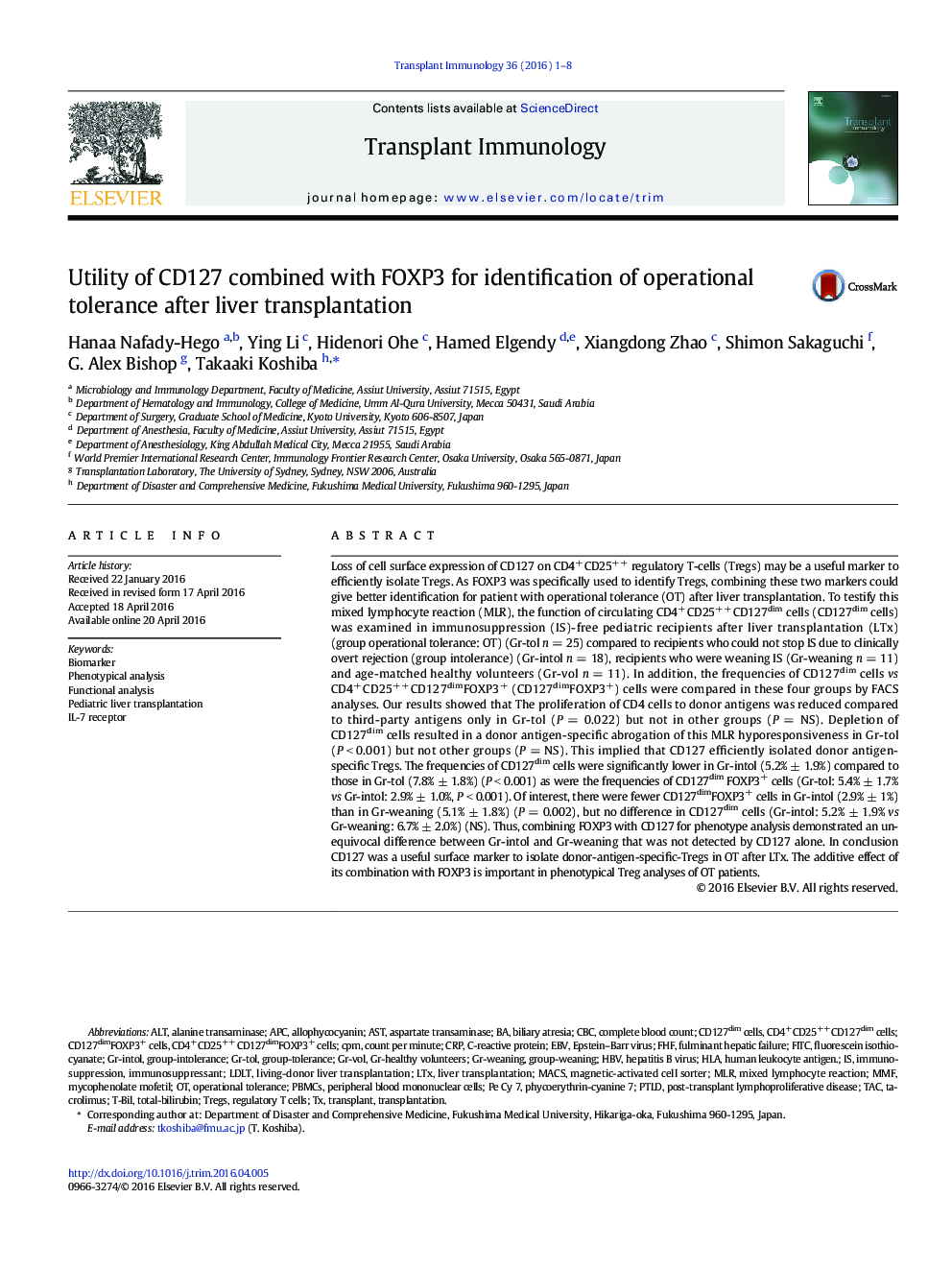| Article ID | Journal | Published Year | Pages | File Type |
|---|---|---|---|---|
| 3391981 | Transplant Immunology | 2016 | 8 Pages |
•FOXP3 is not expressed on the cell surface. Thus, it can’t be used to isolate viable Tregs for their function evaluation.•The loss of CD127 on the cell surface may be a useful marker to isolate and characterize viable Tregs.•Tregs isolated from operationally tolerant Ltx patients using CD127 exerted donor-antigen-specific suppressive property.•The frequency of CD4+ CD25++ CD127dimcells was closely associated with the success or failure of cessation of IS.
Loss of cell surface expression of CD127 on CD4+ CD25++ regulatory T-cells (Tregs) may be a useful marker to efficiently isolate Tregs. As FOXP3 was specifically used to identify Tregs, combining these two markers could give better identification for patient with operational tolerance (OT) after liver transplantation. To testify this mixed lymphocyte reaction (MLR), the function of circulating CD4+ CD25++ CD127dim cells (CD127dim cells) was examined in immunosuppression (IS)-free pediatric recipients after liver transplantation (LTx) (group operational tolerance: OT) (Gr-tol n = 25) compared to recipients who could not stop IS due to clinically overt rejection (group intolerance) (Gr-intol n = 18), recipients who were weaning IS (Gr-weaning n = 11) and age-matched healthy volunteers (Gr-vol n = 11). In addition, the frequencies of CD127dim cells vs CD4+ CD25++ CD127dimFOXP3+ (CD127dimFOXP3+) cells were compared in these four groups by FACS analyses. Our results showed that The proliferation of CD4 cells to donor antigens was reduced compared to third-party antigens only in Gr-tol (P = 0.022) but not in other groups (P = NS). Depletion of CD127dim cells resulted in a donor antigen-specific abrogation of this MLR hyporesponsiveness in Gr-tol (P < 0.001) but not other groups (P = NS). This implied that CD127 efficiently isolated donor antigen-specific Tregs. The frequencies of CD127dim cells were significantly lower in Gr-intol (5.2% ± 1.9%) compared to those in Gr-tol (7.8% ± 1.8%) (P < 0.001) as were the frequencies of CD127dim FOXP3+ cells (Gr-tol: 5.4% ± 1.7% vs Gr-intol: 2.9% ± 1.0%, P < 0.001). Of interest, there were fewer CD127dimFOXP3+ cells in Gr-intol (2.9% ± 1%) than in Gr-weaning (5.1% ± 1.8%) (P = 0.002), but no difference in CD127dim cells (Gr-intol: 5.2% ± 1.9% vs Gr-weaning: 6.7% ± 2.0%) (NS). Thus, combining FOXP3 with CD127 for phenotype analysis demonstrated an unequivocal difference between Gr-intol and Gr-weaning that was not detected by CD127 alone. In conclusion CD127 was a useful surface marker to isolate donor-antigen-specific-Tregs in OT after LTx. The additive effect of its combination with FOXP3 is important in phenotypical Treg analyses of OT patients.
